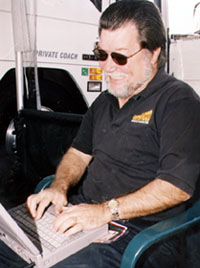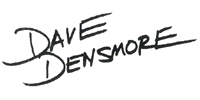| | ||||
|
| ||||
|
For details, we were directed to join NHRA President Tom Compton and a host of others including drivers Gary Scelzi, Tony Schumacher, Ron Capps and Jerry Toliver for a press conference at the ESPN Zone restaurant at 42nd Street and Broadway. Now, knowing that the function is to occur at the ESPN Zone restaurant, what could be deduced about the identity of the "major international multimedia sports entertainment company" referenced in the advisory? Obviously, it's not TNN or CNN or AMC or The Cartoon Network. My guess would be ESPN. And that's my final answer. Indeed, NHRA has signed a five-year agreement with ESPN that provides for expanded same-day coverage of the 23 events in the Winston Drag Racing Series as well as for a beefed up schedule for "NHRA Heat," the half-hour newsmagazine that this year airs 24 times in the Thursday night slot preceding RPM 2Night. Unfortunately, there was little other information available to the few media-types who, enticed by the promise of a major announcement, actually showed up on Times Square to listen to Compton and others speak in rambling generalities. To be honest, what was announced could have been gleaned from the media advisory alone. To put together a press conference in New York City to announce nothing more than the fact that NHRA races will be televised the next five years exclusively on ESPN and ESPN2 seems a little pretentious. Why would the New York media even care about the NHRA TV package, especially one without details like, for instance, time slots, dates and the identity of the on-air talent. Such an announcement, as tepid as it was, would have found a much more receptive audience in Los Angeles or Chicago, cities where the media actually gives a damn about drag racing - or at least knows the difference between nitromethane and nitroglycerine. Even Bristol, Connecticut, home of all the ESPN networks. Or Bristol, Tennessee, site of this week's second Winston Showdown. But New York City?! NHRA should have saved itself the expense and the embarrassment. Ever wonder what would happen if they gave a press conference and nobody came? We almost found out. Oh, there were a lot of people; there just wasn't a lot of media. How big was this announcement? Not big enough, certainly, for the New York Times. Not significant enough to get on the pages of the Wall Street Journal. It certainly wasn't mentioned on ESPN's SportsCenter. Heck, it didn't even make it on ESPN.com. Our "strategic partner" didn't even use it. As to whether the alliance with ESPN constitutes the "best television package in the history of the sport," as Compton proudly proclaimed, I think it best to adopt a wait-and-see attitude. After all, the High Sheriffs are somewhat prone to exaggeration. I believe it was the same cast of characters that declared the current TV package "the best in history" when it was unveiled at the start of the 2000 season. Anyone who's been around the sport longer than three years - which excludes most of Compton's inner circle - knows that we had a better package as recently as 1998. Not only did we have more hours of coverage, we had better ratings numbers: 1.2's and 1.3's instead of .7's and .8's. Not only that, "NHRA Today" was a quality magazine show that aired 42 times a year. Compared to "NHRA Heat," which suffers from both manpower and budget restraints, "Today" was Emmy Award-winning stuff. Certainly, having coverage of all of its events centralized with one network should help provide stability. However, aligning itself with ESPN doesn't automatically take the sport to the next level. Before we know what kind of package we really have, NHRA needs to address budget issues, personnel issues, production issues and creative issues. The coverage we now have often has been criticized for being too predictable. On the positive side, Jerry Archambeault, NHRA's VP/Communications, has shown a refreshing propensity for new ideas. He and nine of his cohorts sit down every Monday after an NHRA national event and critique both the TV coverage of the race and the NHRA Heat show which accompanied it. They purportedly fine tune what is good, like the bitchin' overhead shots that show how much real driving is done in a straight-line quarter-mile, and throw out what is stale and uninteresting which, in the opinion of many, is everything else. In addition, Archambeault obviously isn't afflicted by past biases. That became apparent when he sought out input from video outlaw Dean Papadeas, who was on the cutting edge of drag racing video in the 1970s before being all but blackballed by Archambeault's NHRA predecessors. Papadeas believes that improved digital sound technology could yield more realistic audio which, until sensory technology is developed that can replicate the smell, taste and tears of a nitro-burning Funny Car, is better than nothing. So, while this probably ISN'T the best TV package ever, despite what Tom Compton might have us believe, it's certainly better than what we have right now and what we have right now is considerably better than what we had last year. It ain't perfect. But maybe, just maybe, that light at the end of the tunnel ISN'T a train after all. Now that would be news. Think we should call a press conference?
Dave Densmore, a paid columnist for DRO, also works for John Force. Photo by Jeff Burk
| ||||
| Copyright 1999-2001, Drag Racing Online and Racing Net Source | ||||



